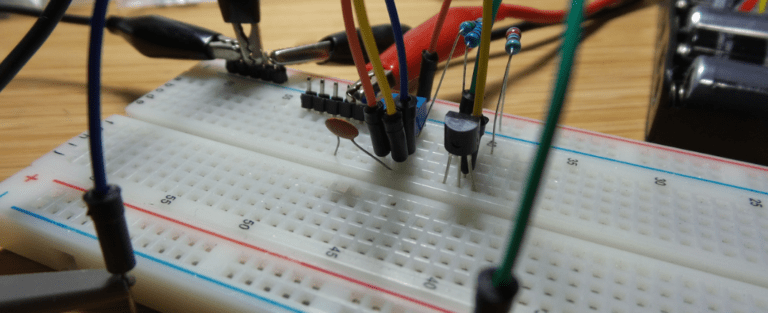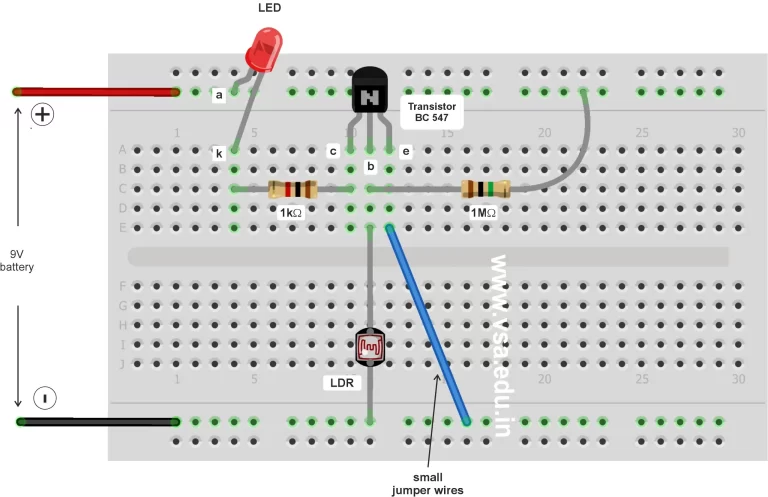
Parameters of Bipolar Transistor
There are two important parameters of a transistor: the (α) and the (β). The relation between emitter current Ie and the collector current Ic is given by the parameter, known as alpha (α) of the transistor.
Details of construction, working with parameters, biasing techniques and more about bipolar transistors.

There are two important parameters of a transistor: the (α) and the (β). The relation between emitter current Ie and the collector current Ic is given by the parameter, known as alpha (α) of the transistor.

The small input voltage Vin is amplified by the transistor and we get output voltage Vo across emitter resistor of the transistor. In this configuration, when input signal is positive going, output is also positive and when input is negative output is also negative, as shown in above wave diagram.

In this circuit, the emitter is common to both input and output terminals of amplifier circuit. Thus, the input signal is connected between base & emitter and the amplified output signal is taken between collector & emitter, so that emitter is common.

The transistor is used as an amplifier. But in amplifier circuit there two input terminals and two output terminals. However, the transistor has only three terminals. So any one terminal of the transistor is KEPT COMMON to the input and output terminals of amplifier circuit.

Transistor is a semiconductor device having three layers, three terminals and two junctions. Since we have only two types of semiconductors i.e. the p-type and n-type, there are two types of transistors: they are NPN transistor and PNP transistor.

The PNP transistor can be used in two different modes: forward biased mode and the reverse biased mode. In forward biased mode, the current can easily flow through it. So it acts like a CLOSED SWITCH.